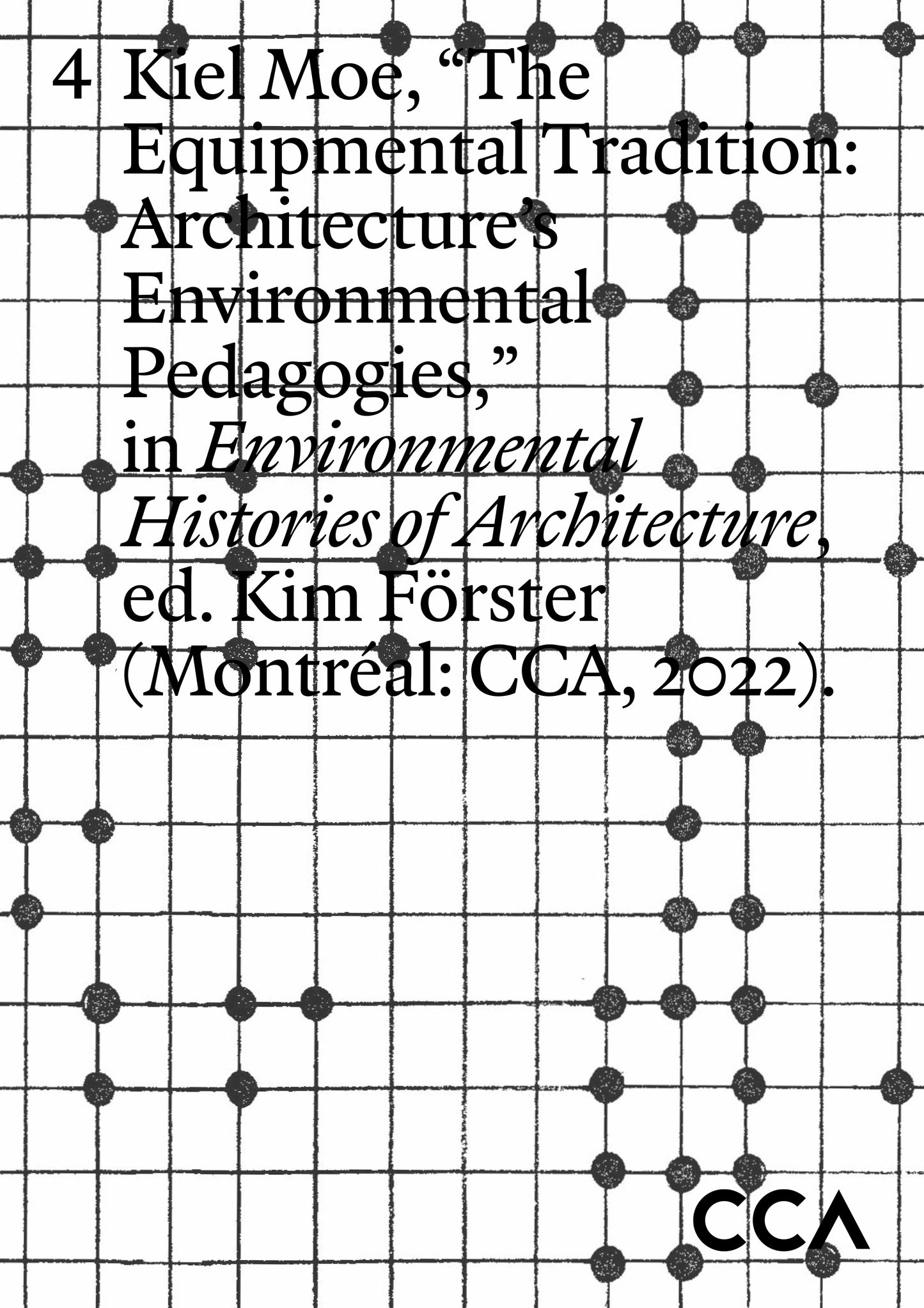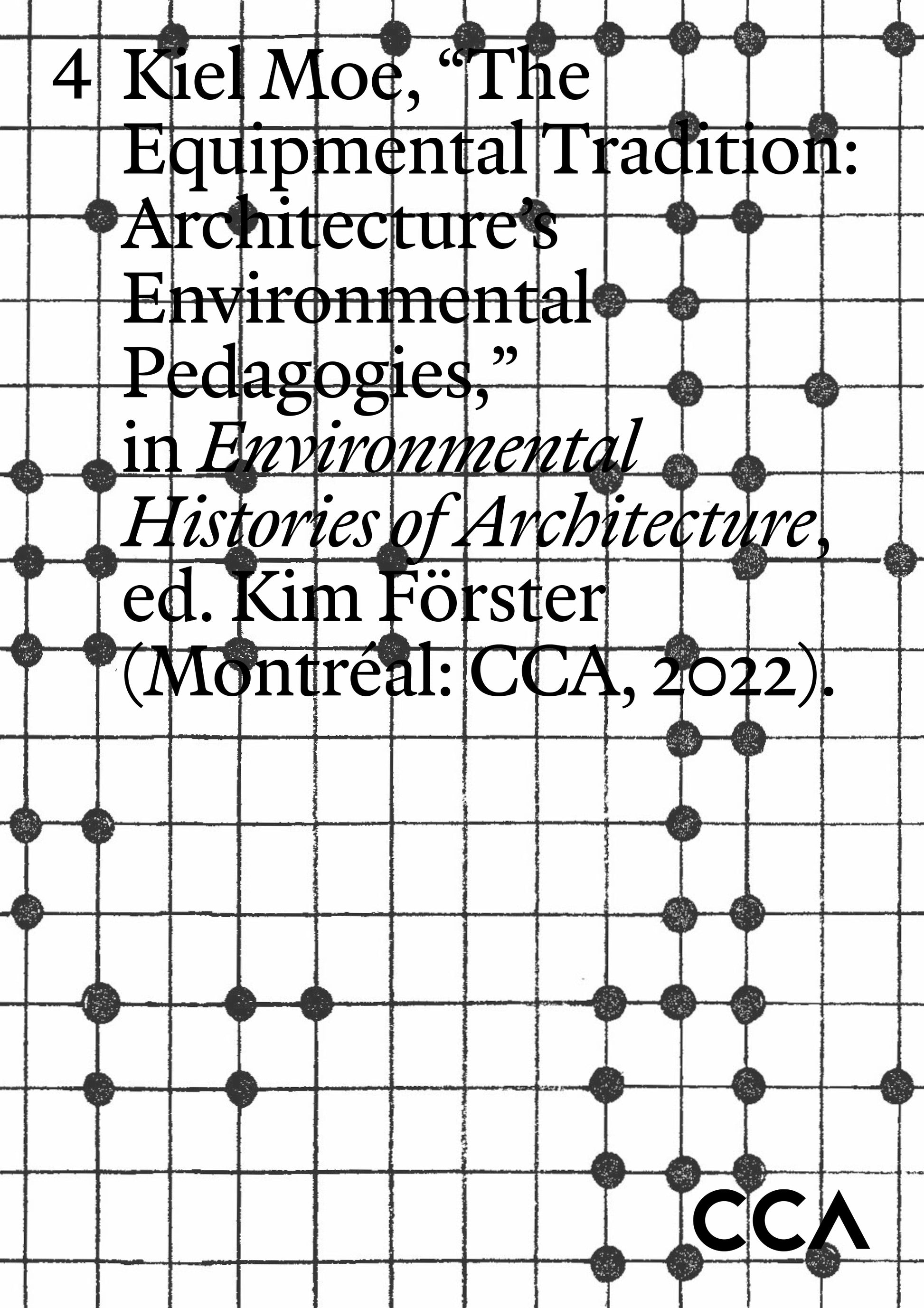The Equipmental Tradition: Architecture's Environmental Pedagogies
The Equipmental Tradition: Architecture's Environmental Pedagogies
Environmental Histories of Architecture presents the work of eight researchers who each analyze specific environmental relations, crises, and reforms and demonstrate how society and the environment have been co-constructed, represented, and lived in their respective geographies. While their essays are published independently as chapters, together they cover an expansive range of thinking about how the environment changed, and was changed by, architecture.
In Chapter 4, Kiel Moe argues that throughout the twentieth century, pedagogy in schools of architecture across North America constructed and maintained a bleak image of the environment as the very source of proprietary equipment. The essay traces this tradition from early curricula and textbooks, through course standardization and accreditation criteria, to the “Environmental Control System“ courses of the 1960s, which adopted the closed-systems thinking popularized by NASA as well as Reyner Banham’s take on mechanical services. Despite pedagogical alternatives offered by Lewis Mumford, James Marston Fitch, and Douglas Haskell, the focus on equipment was reinforced through close ties between industry and academia, leading to a path dependency that continues to dominate architecture curricula in North America.
Author: Kiel Moe
Editor: Kim Förster
Managing Editor: Claire Lubell
Copyeditor: Lucas Freeman
Other contributors: Aleksandr Bierig, Nerea Calvillo, Daniel Barber, Jiat-Hwee Chang, Hannah le Roux, Isabelle Doucet, Paulo Tavares, Kim Förster
Graphic Design: Tessier A
Programming: Rosen Tomov
Published by the CCA and distributed open access through Library Stack.
This open-access publication is made available according to the terms of the license CC BY-NC-ND.
Click here to download the PDF.
Add to cart to download the ePub.
Couldn't load pickup availability


